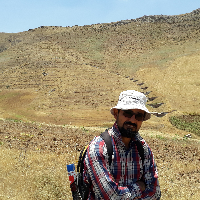Frequency Analysis of Maximum Daily Rainfall and Determining the Best Appropriate Distribution Functions in the Bostan Watershed, Golestan Province
Frequency analysis of daily rainfall or return period of rainfall and flooding events is very important considering the behavioral complexity in water resources management; because ignoring it can lead to urban destructive floods. In the present research, three distribution functions of Pearson, Beta, and Gamma were compared to investigate and select the most appropriate distribution function for the precipitation data acquired from meteorology stations and CHIRPS satellite in seven stations in the watershed of Bustan Dam. Statistical analyses showed that satellite data were ineffective to estimate daily precipitation due to high errors in RMSE, MAD, and NASH. Meteorological data were used to spot the best distribution. Google Earth Engine and Python programming language were used. Then, the selected distribution function was used to determine the maximum daily rainfall, frequency probability, and return period of 2, 10, 50, 100, and 200 years. The results of the goodness of fit test, Error Sum of Squares, Bayesian Information Criterion, Akaike Information Criteria well as Kullback-Leibler Divergence showed that in five stations of Kalaleh, Qarnaq, Golestan National Park, Golestan Dam, and Glidagh, the Pearson function is the most suitable distribution function. Also, in the other two stations (Gonbad and Tamar), the Beta function was recognized as a suitable function. However, Gamma distribution in the study area is not efficient. So, it can be concluded that heavy and irregular rainfall can be effective in choosing the best distribution function at each station. Therefore, it is recommended to consider the maximum possible rainfall and as a result of the possible occurrence of floods with principled and accurate management to prevent human and financial losses in susceptible areas, especially in the study area.
-
Effects of Biological Soil Crusts on Some Soil Physico-Chemical Propertices (Case Study: Hilslopes of Agi-Gol Wetland, Golestan Province)
Rashin Mohmmadi, Mohsen Hosseinalizdeh *, Ali Mohammadian Behbahani, Narges Kariminejad, Vahedberdi Sheikh, Jahangir Mohammadi
Desert Ecosystem Engineering Journal, Winter 2025 -
Development of a semi-automatic method based on object-based analysis and data mining algorithm in landslide detection (case study of Mohammad Abad forest watershed in Golestan)
Marzieh Nikjoui, *, Ali Shamsoddini, Hamidreza Pourghasemi, Chooghi Bairam Komaki
Journal of Remote Sensing and GIS Applications in Environmental Sciences, -
Evaluation of the efficiency of three data mining models in zoning areas prone to gully erosion (Case study: Upper Watershed of Boustan Dam)
Soraya Yaghobi, Mohsen Hosseinalizdeh *, Chouoghi Bairam Komaki, , Hamidreza Pourghasemi
Journal of Water and Soil Management and Modeling,




